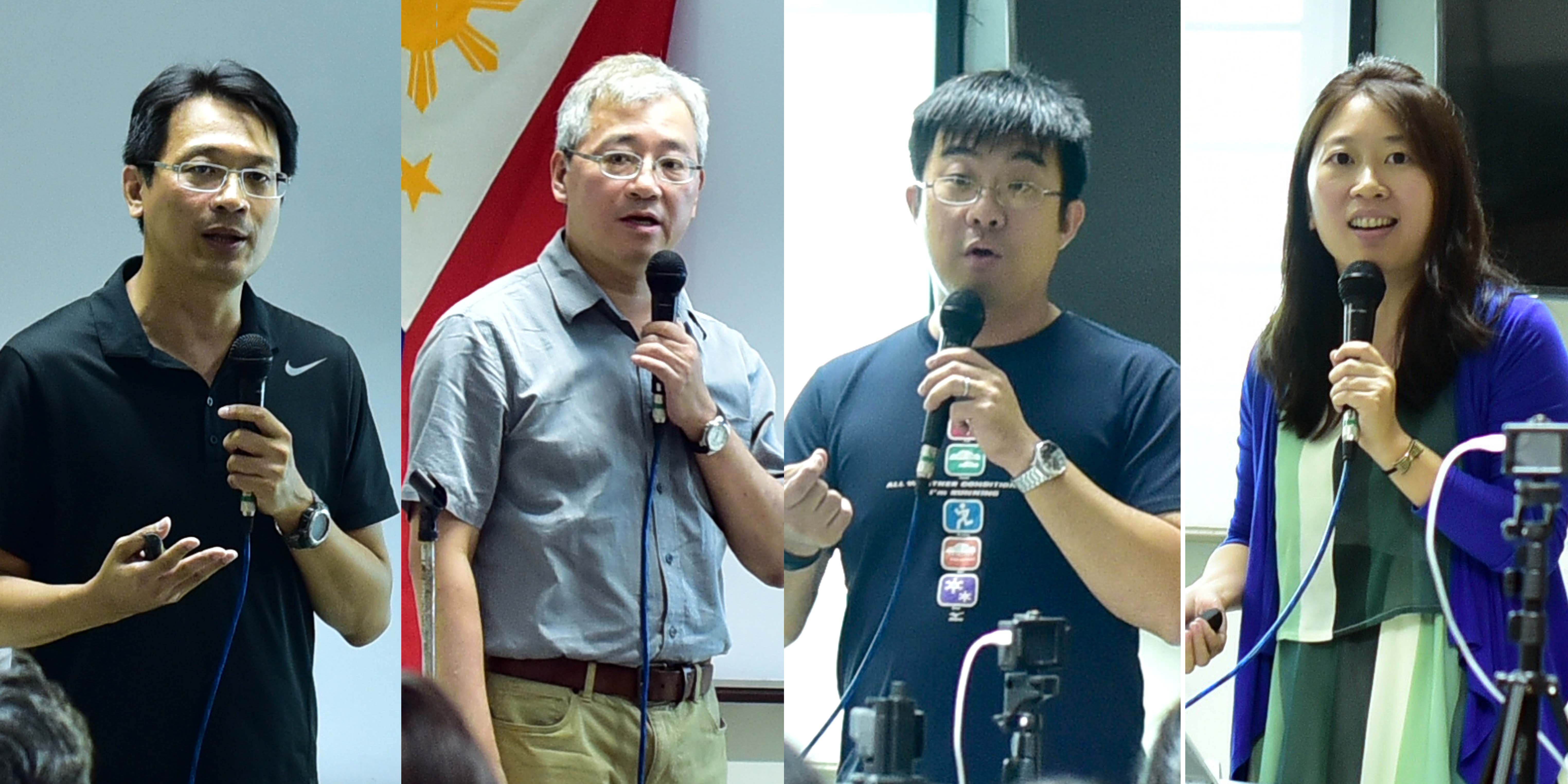
Four scientists from different Taiwanese institutions visited the School of Environmental Science and Management (SESAM) to lecture on meteorology and disaster prevention last August 8, 2018 at SESAM Lecture Hall. The lectures are part of the collaboration between the University of the Philippines Los Baños (UPLB), Philippine Atmospheric, Geophysical and Astronomical Services Administration (PAGASA) and the Taiwan Council of Agriculture-Soil and Water Conservation Bureau.
Dr. Yin Hsiao-Yuan, Deputy Chief Engineer and Director of Debris Flow Disaster Prevention Center, Soil and Water Conservation Bureau, Council of Agriculture presented his research entitled “Non-structural countermeasures against debris flow disaster in Taiwan”. His study included utilization of localized rainfall-based debris flow warning system and the installation of sensors in strategic locations in landslide prone areas dam vicinities, which will detect vibration signals for debris flows. Aside from these sensors, their agency uses mobile debris flow monitoring stations, as well as portable monitoring stations.
Dr. Yin also stressed that their aim is to establish disaster resilient communities and to encourage people to join debris flow disaster prevention groups. He added that in the Taiwanese Disaster Prevention and Protection Act, the government should warn the community about the possibility of landslides in a locality. Residents that will not heed to the evacuation advice of the authorities will be given a fine ticket amounting to NT$ 50,000. “Residents have a right to stay, but local authorities marked and documented their houses. If they get injured, they cannot blame the authorities since the videos will show that they opted not to leave their place despite the warnings”, Dr. Yin said.
Meanwhile, Dr. Chi Luh Hsiang’s presentation entitled “Introduction of Japan’s Himawari-8 Geostation Satellite” featured the capacity for detecting meteorological occurrences such as solar radiation for agriculture and green energy, monitoring of dust storms and rainfall estimates. Dr. Luh, a Technical Specialist of the Metorological Satellite Center, Taiwan Central Weather Bureau (CWB), said they also study convective initiation, Sea Surface Temperature (SST) Anomalies, Marine Chlorophyll, Normalized Difference Vegetation Index (NDVI) and sea surface currents.
Dr. Chang Wei Yu, Assistant Professor, Chinese Culture University, discussed his research entitled “The study of microphysical characteristics of heavy precipitation systems from disrometer and dual-polarmetric radar.” Dr. Chang, who visited SESAM-UPLB last earlier this year, said they installed the PARticel SIze VELocity (Parsivel) equipment at the PAGASA-Agromet UPLB Station last May 2, 2018 and the technology was able to measure rain drop size, which is correlated also with rainfall intensity.
Lastly, Dr. Lo Tzu-Ting, a Technical Specialist at the Weather Forecast Center, Taiwanese CWB, discussed her study on “The evaluations of a two-week tropical cyclone (TC) forecasts from the NCEP GEFSv11 Reforecasts”. The study was able to use CWB TC trackers to objectively detect two-week cyclones developing in the Western Pacific region.
Dr. Decibel F. Eslava, Dean of SESAM, extended her gratitude to the Taiwanese scientists who visited and shared their knowledge to SESAM faculty, staff and the students, particularly to incoming MS and PhD Environmental Science majors who are planning to take meteorology and disaster risk reduction and management as their respective research topics.

